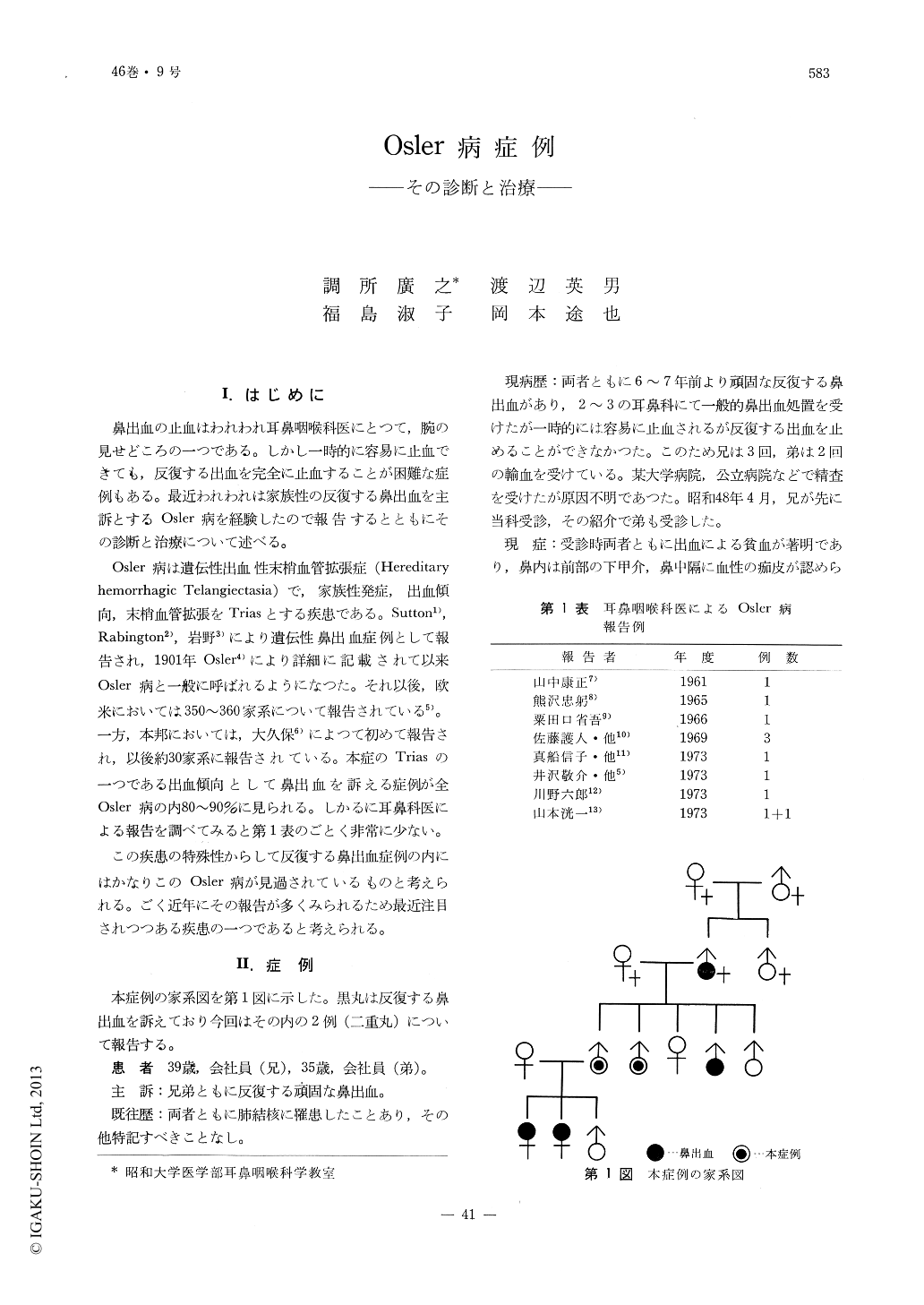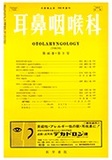Japanese
English
- 有料閲覧
- Abstract 文献概要
- 1ページ目 Look Inside
I.はじめに
鼻出血の止血はわれわれ耳鼻咽喉科医にとつて,腕の見せどころの一つである。しかし一時的に容易に止血できても,反復する出血を完全に止血することが困難な症例もある。最近われわれは家族性の反復する鼻出血を主訴とするOsler病を経験したので報告するとともにその診断と治療について述べる。
Osler病は遺伝性出血性末梢血管拡張症(Hereditary hemorrhagic Telangiectasia)で,家族性発症,出血傾向,末梢血管拡張をTriasとする疾患である。Sutton1),Rabington2),岩野3)により遣伝性鼻出血症例として報告され,1901年Osler4)により詳細に記載されて以来Osler病と一般に呼ばれるようになつた。それ以後,欧米においては350〜360家系について報告されている5)。一方,本邦においては,大久保6)によつて初めて報告され,以後約30家系に報告されている。本症のTriasの一つである出血傾向として鼻出血を訴える症例が全Osler病の内80〜90%に見られる。しかるに耳鼻科医による報告を調べてみると第1表のごとく非常に少ない。
この疾患の特殊性からして反復する鼻出血症例の内にはかなりこのOsler病が見過されているものと考えられる。ごく近年にその報告が多くみられるため最近注目されつつある疾患の一つであると考えられる。
Two cases of Osler's disease, hereditary hemorrhagic telangiectasis occurring in two brothers, aged 39 and 35, are reported. The patients complained of repeated epistaxis for recent 6 years and consulted many ENT specialists. But in spite of these consultations no relief was available.
Examination showed telangiectasis on the nasal mucous membrane, lips and tongue. Family history revealed the hereditary influence to be conclusive. Diagnosis of Osler's disease was made on blood examinations.
The treatment was started by application of β-methasone ointment on the nasal mucous membrane. The amount of nasal bleeding was slightly decreased by this treatment. Electrocoagulation was applied to bleeding from the inferior turbinates. The septum was treated by submucous resection.
Through these treatments the epistaxis was remarkably improved.

Copyright © 1974, Igaku-Shoin Ltd. All rights reserved.


